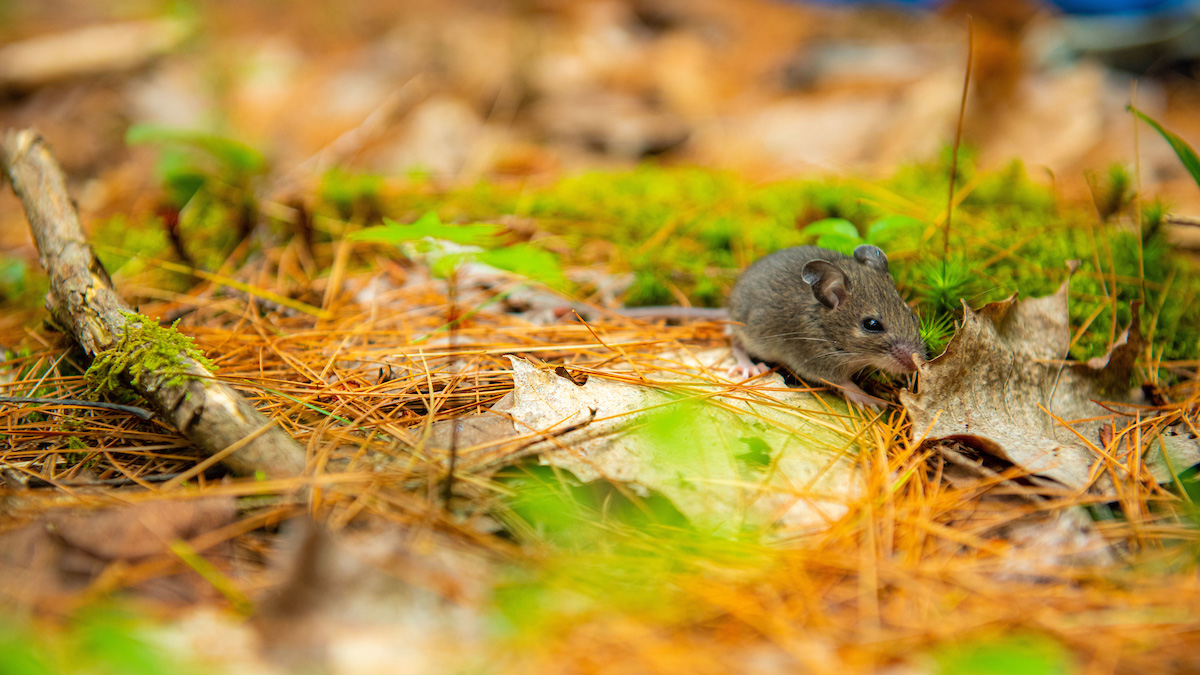
UMaine and Maine Medical Center study illustrates how Lyme disease-causing ticks have increased in Maine
Tracking the types of ticks that plague Maine helps scientists predict which tick-borne pathogens might become a problem. New research shows that blacklegged ticks have been increasing in abundance in a Midcoast forest over the past 30 years — and bringing more Lyme disease with it.
Blacklegged ticks infected with a certain bacteria are the primary vector for Lyme disease, a bacterial infection that can cause joint, heart and nervous system damage if left untreated. Past studies have shown that blacklegged ticks have been expanding their range in the Northeast and Midwest since the Last Glacial Maximum, and further northward in the last two decades as climate change warms areas once too cold for the critter.
To track ticks over time in a Maine forest, researchers from the University of Maine and the Maine Medical Center Research Institute’s Lyme & Vector-Borne Disease Laboratory collected and tested ticks from small mammals in the Holt Research Forest, located in the town of Arrowsic in Sagadahoc County, over the course of three decades. Jack Witham, a recently retired associate scientist with UMaine’s Center for Research on Sustainable Forests, collected over 3,000 ticks from over 10,000 animals during this time.
Small mammal trapping is a useful tool for studying ticks because it gives scientists information about pathogens in the host mammals in addition to the data they gather about the ticks themselves. Some small mammals are extremely effective reservoir hosts for the bacterium that causes Lyme disease, and they will pass that bacteria on to the ticks that bite them.
By trapping the small mammals and collecting the ticks, the researchers aimed to quantify the population trend of a variety of tick species, including blacklegged ticks, and how they corresponded to the fluctuations in furry hosts in the Midcoast area.
When tick surveillance began in 1989, researchers found only vole ticks, squirrel ticks and dog ticks feeding on species of mice, voles, squirrels, chipmunks and shrews. The first blacklegged tick was found on a red squirrel in 1996 and the first detection of the Lyme bacteria in 2001. By 2007, the blacklegged tick population was established, with all life stages of a breeding population present: eggs, larvae, nymphs and adults. The increase in blacklegged ticks over time was not related to white-footed mouse abundance, which fluctuated but did not increase over time.
Researchers are concerned that this emergence-establishment pattern will repeat for additional vector tick species that are expanding northward toward Maine. Cape Cod, Massachusetts hosts an established population of the lone star tick, which transmits pathogens that cause diseases like human monocytic ehrlichiosis and tularemia. and can cause red meat allergy. Meanwhile, ticks such as the vole tick have declined.
“This study reinforces other studies that illustrate patterns of emergence and establishment of ticks and tick-borne pathogens. It also reminds us that public health is tied to how we manage our natural environment,” says Susan Elias, first author and staff scientist at the Maine Medical Center Research Institute’s Vector-borne Disease Lab, who conducted the research as part of her Ph.D. work at UMaine.
The researchers suggested that the emergence of blacklegged ticks in the Holt Research Forest could be linked in part to climate change and an increase in the local population of white-tailed deer, the primary blood meal host for adult ticks (though deer are not reservoirs for the bacteria that causes Lyme disease).
Meanwhile, one small mammal in the study rose above the rest when it came to carrying blacklegged ticks. White-footed mice represented the majority of all the study’s captures, three times more than red-backed voles and 10 and 13 times more than chipmunks or short-tailed shrews, respectively. White-footed mice hosted just over 94% of all the blacklegged ticks found, and 15% of all white-footed mice had blacklegged ticks on them.
What’s more, the population of white-tailed deer and white-footed mice overlap in Maine. White-footed mouse populations, too, have been found to be expanding northward.
“Continued surveillance at the Holt Research Forest would be helpful, especially since we anticipate the emergence of the lone star tick in Maine,” Elias says.
The study was published in the Journal of Medical Entomology in December 2021.
Contact: Sam Schipani, samantha.schipani@maine.edu
